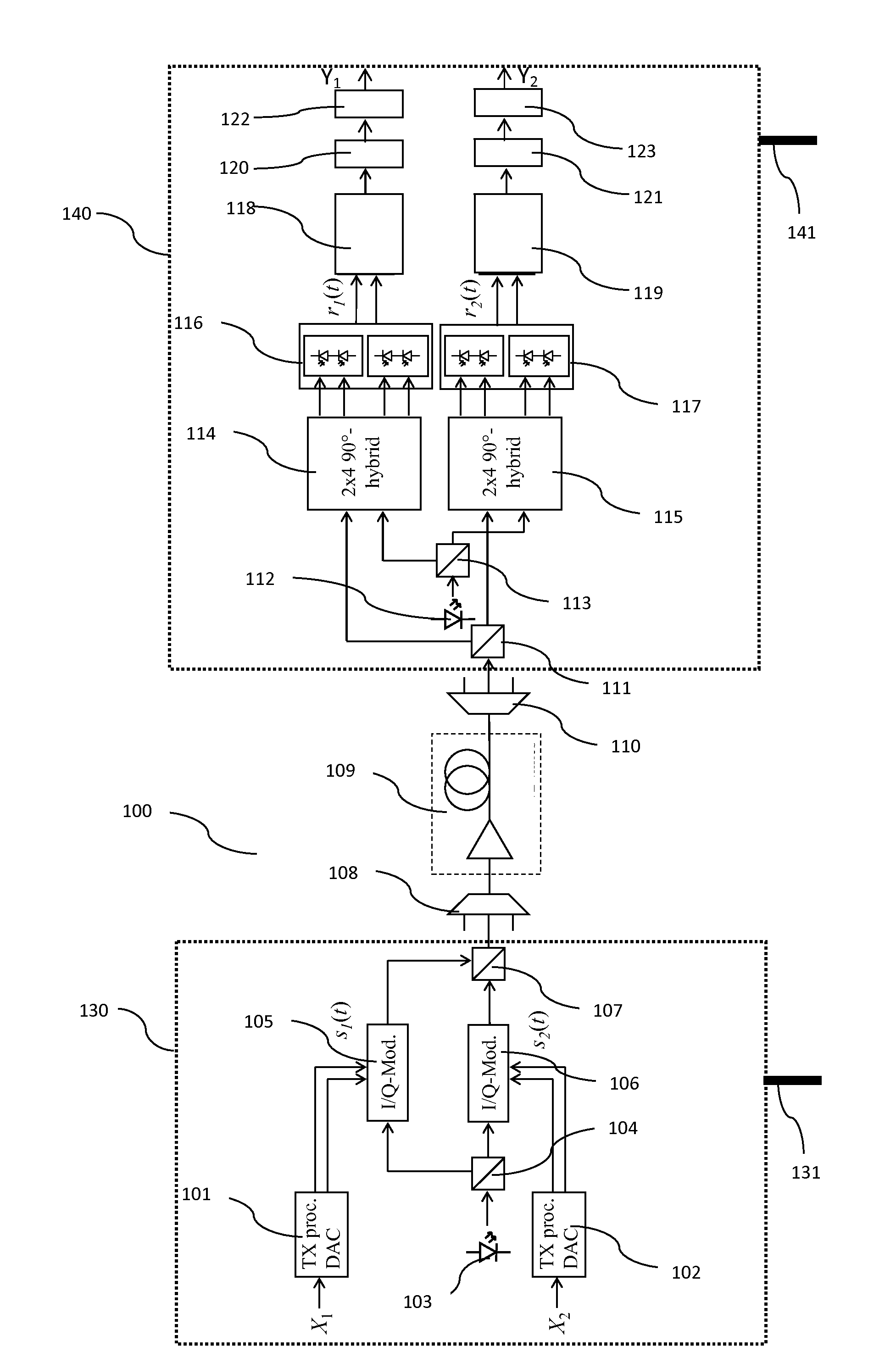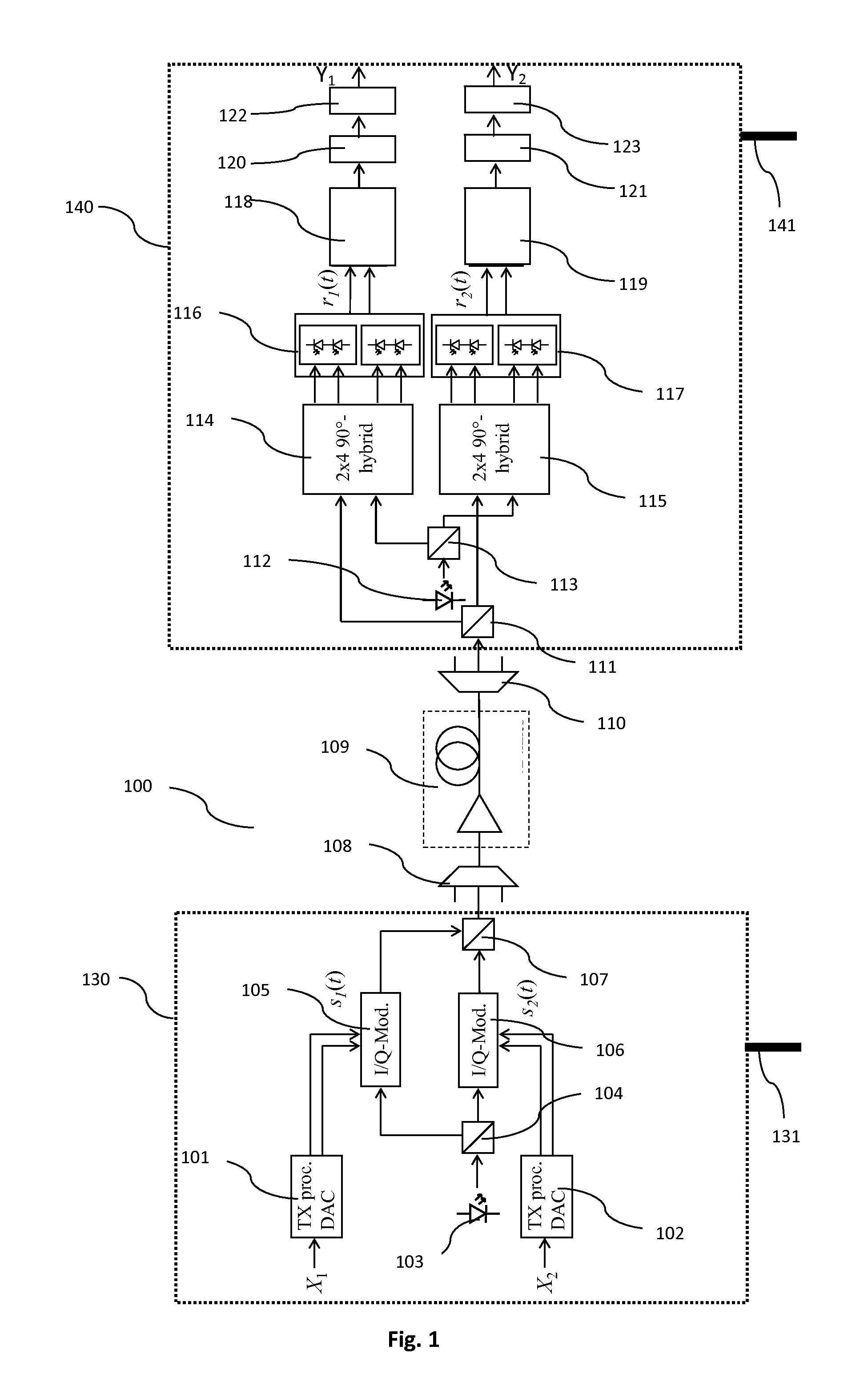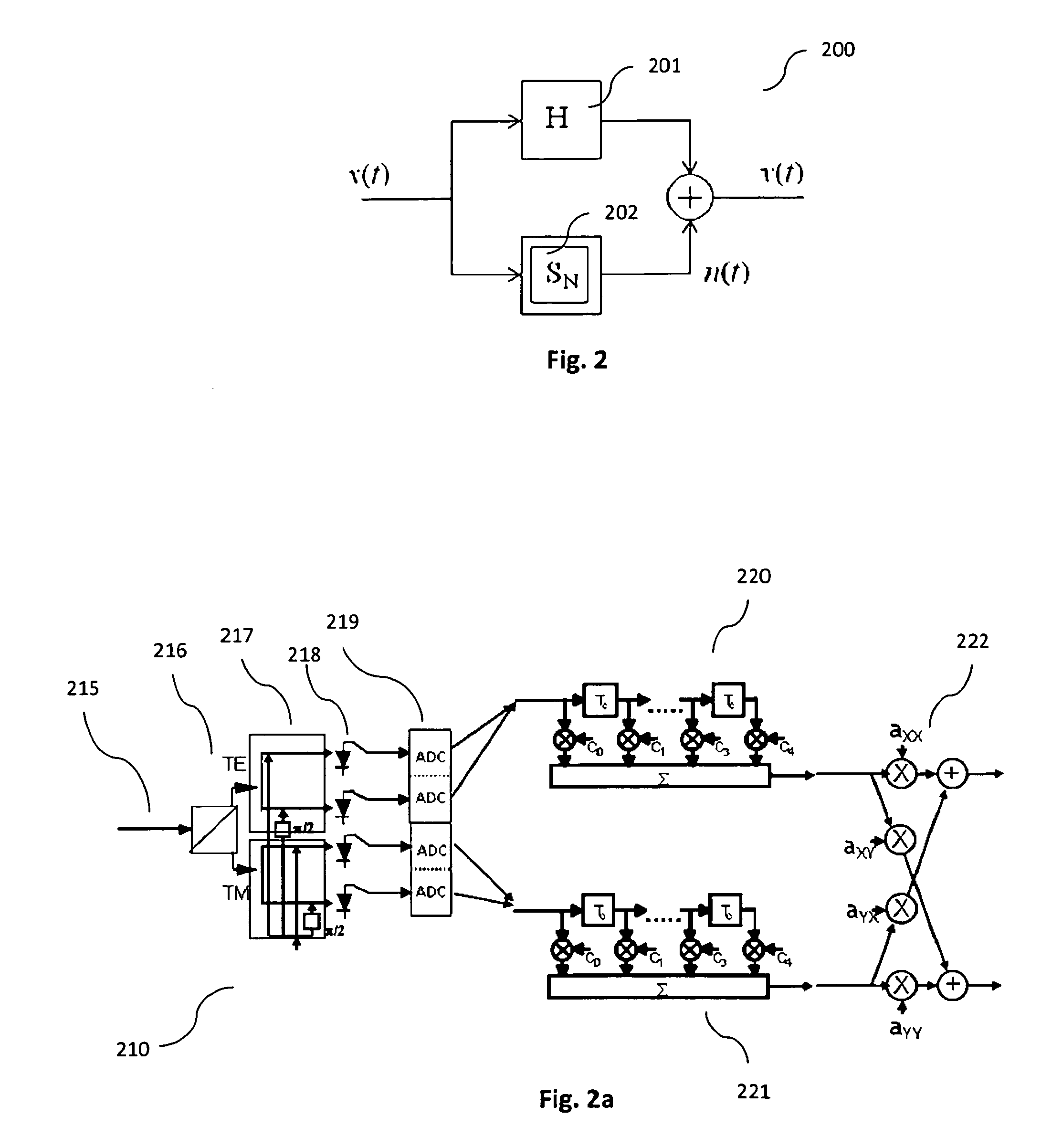Spectral efficiency estimation in coherent receivers
a technology of coherent receivers and spectral efficiency estimation, which is applied in the direction of transmission monitoring, transmission monitoring/testing/fault-measurement systems, electrical equipment, etc., can solve the problems of optical channel degradation, optical channel degradation, and the actual load in the network
- Summary
- Abstract
- Description
- Claims
- Application Information
AI Technical Summary
Benefits of technology
Problems solved by technology
Method used
Image
Examples
Embodiment Construction
[0060]In the following, a method for modeling an optical transmission system comprising linear and non-linear components is described. The determined system model may be used for monitoring purposes, i.e. for extracting information with regards to the current network conditions, notably with regards to the current achievable throughput of the network.
[0061]In order to identify the level of non-linearity of the underlying transmission system, it is proposed to first perform a spectrum estimation of a representative linear component of the transmission system. Subsequently, an equivalent noise spectrum is determined for the non-linear distortion contribution. Since the approach operates in the frequency domain, it is well adapted for the application in orthogonal frequency division multiplexing (OFDM) systems. As a consequence, the sub-carrier processing used for determining information with regards to ASE and fiber non-linearity may be implemented with low computational complexity.
[0...
PUM
 Login to View More
Login to View More Abstract
Description
Claims
Application Information
 Login to View More
Login to View More - R&D
- Intellectual Property
- Life Sciences
- Materials
- Tech Scout
- Unparalleled Data Quality
- Higher Quality Content
- 60% Fewer Hallucinations
Browse by: Latest US Patents, China's latest patents, Technical Efficacy Thesaurus, Application Domain, Technology Topic, Popular Technical Reports.
© 2025 PatSnap. All rights reserved.Legal|Privacy policy|Modern Slavery Act Transparency Statement|Sitemap|About US| Contact US: help@patsnap.com



